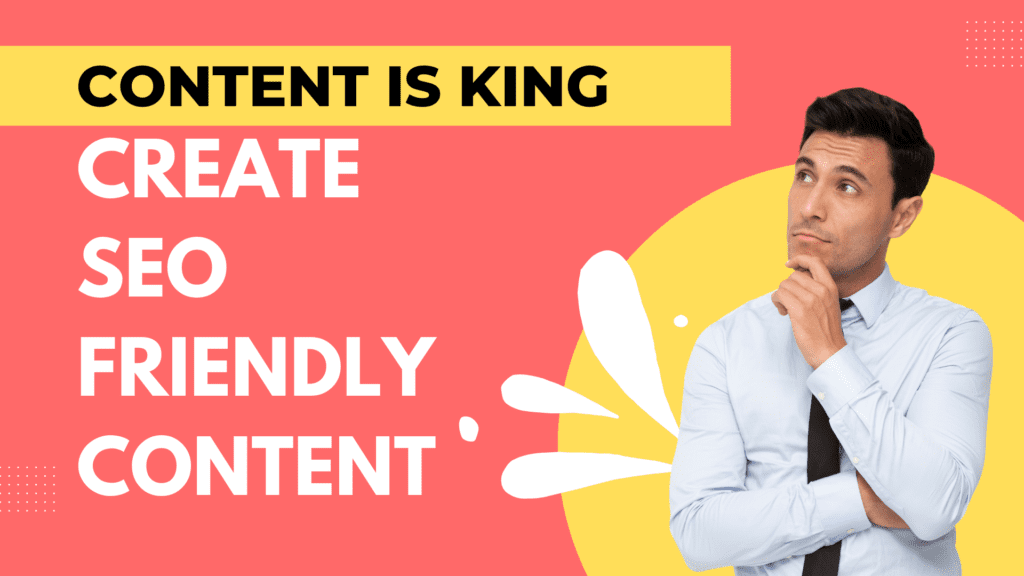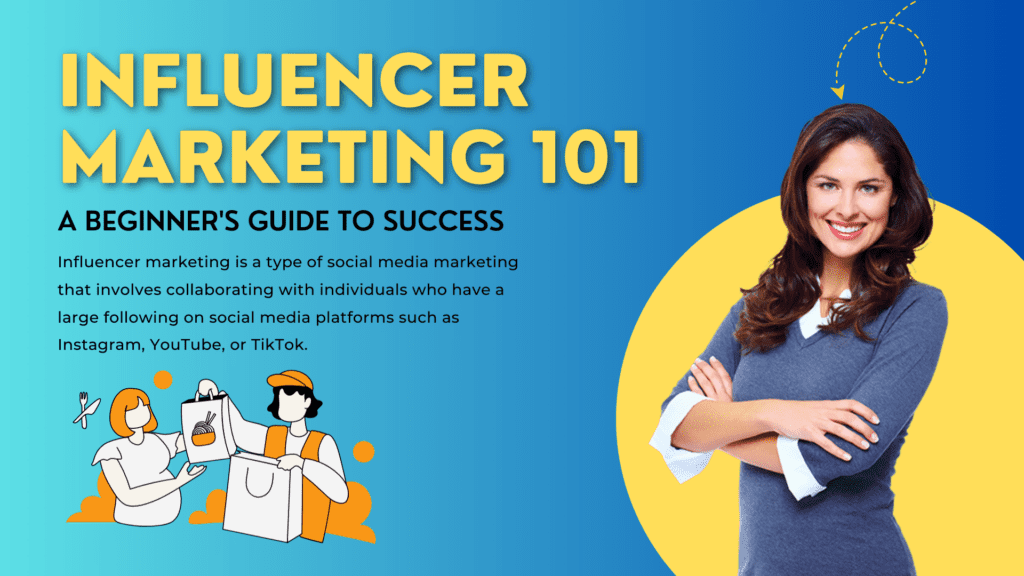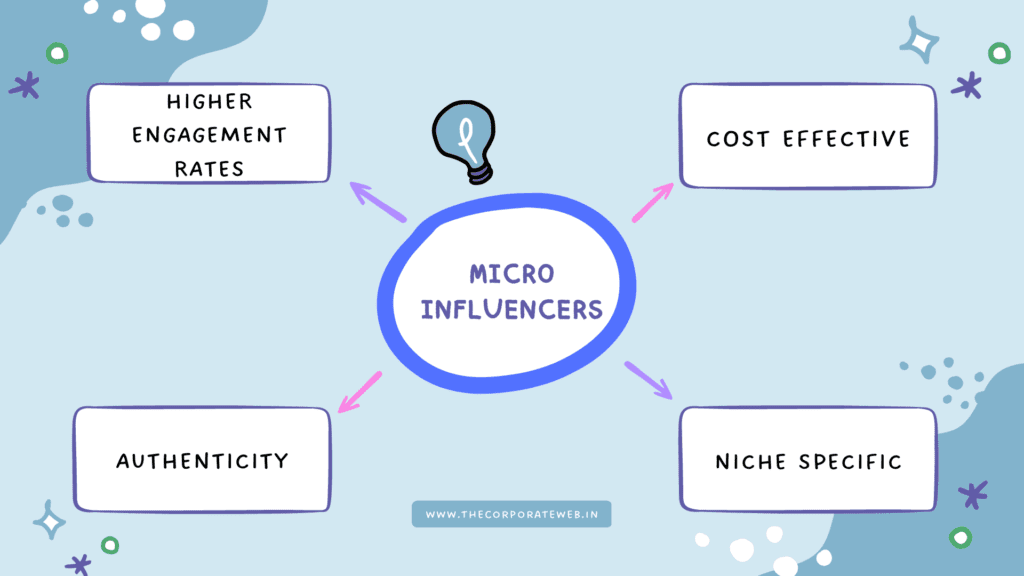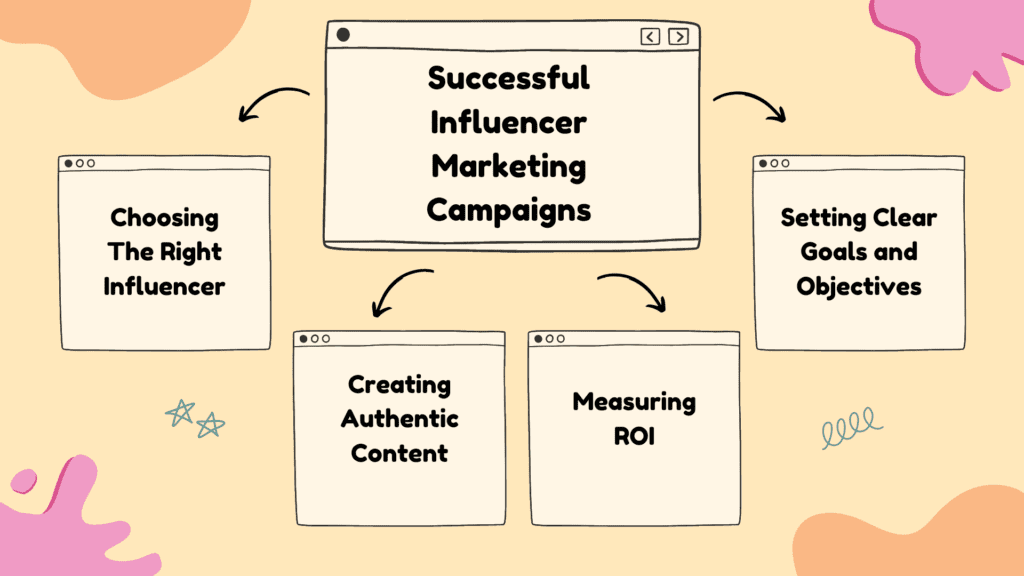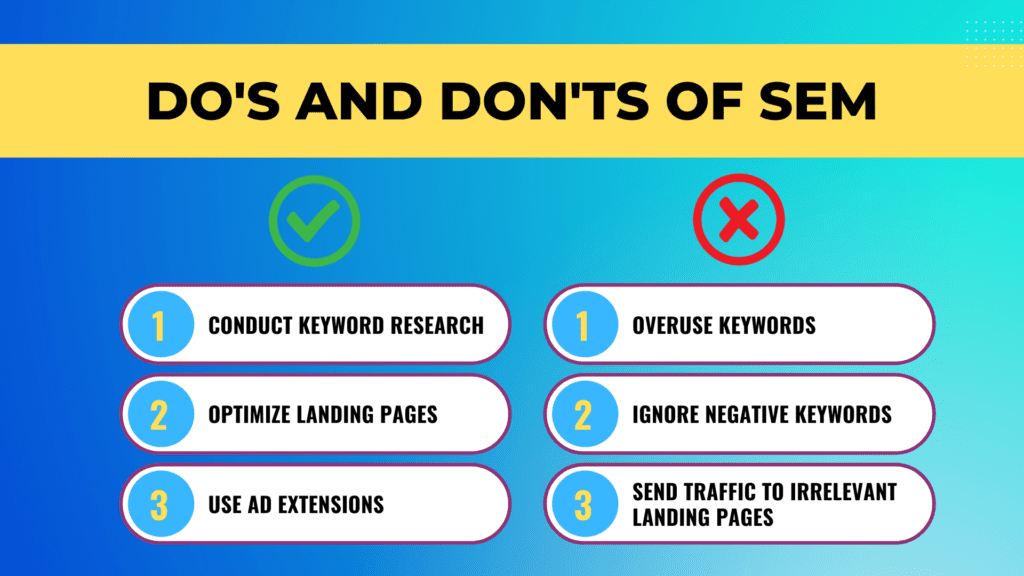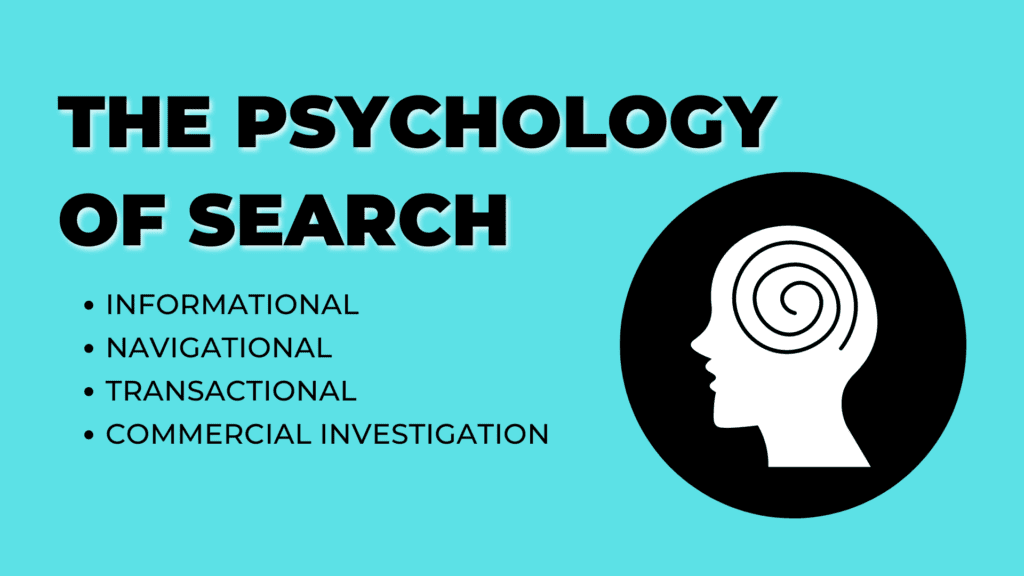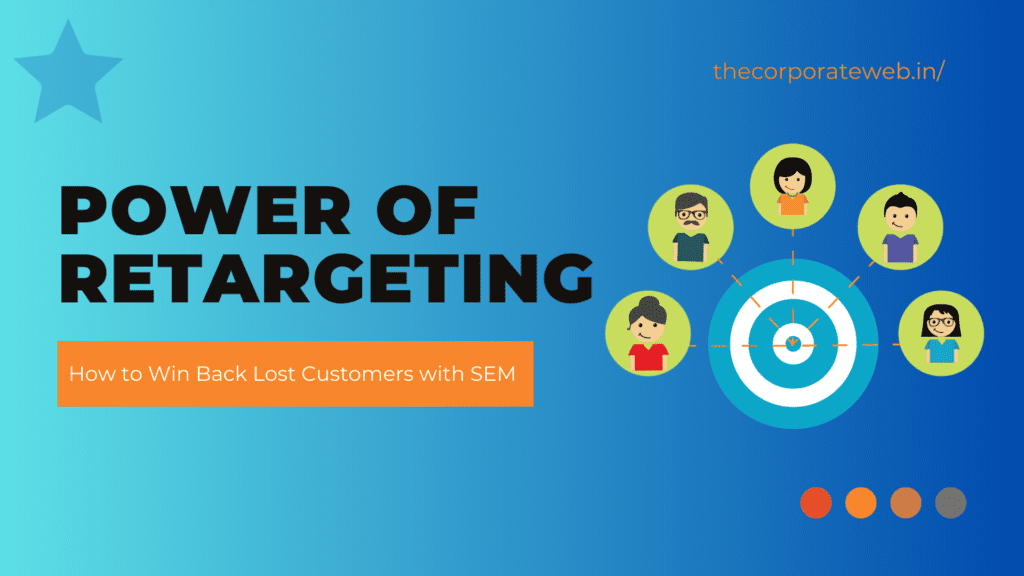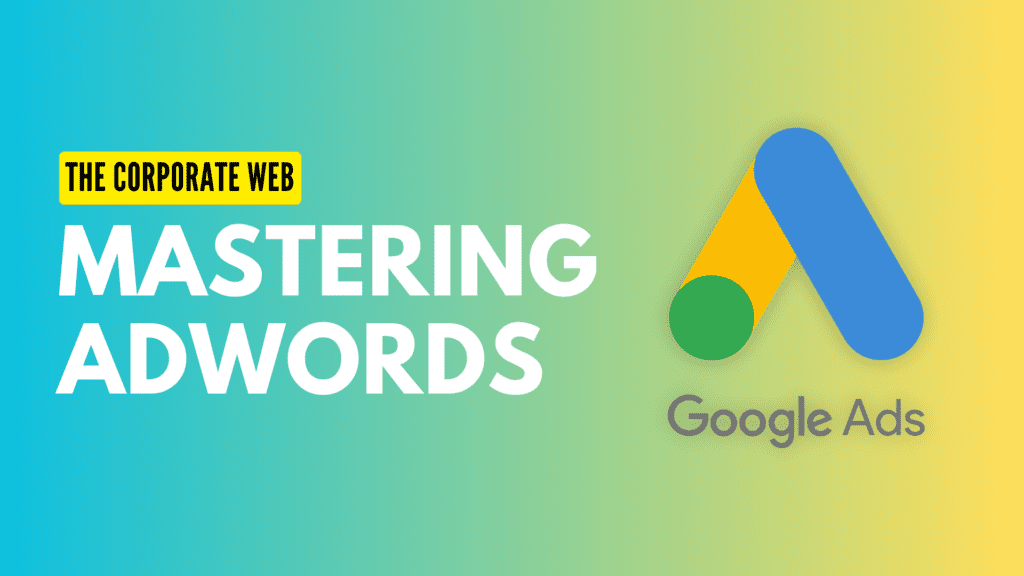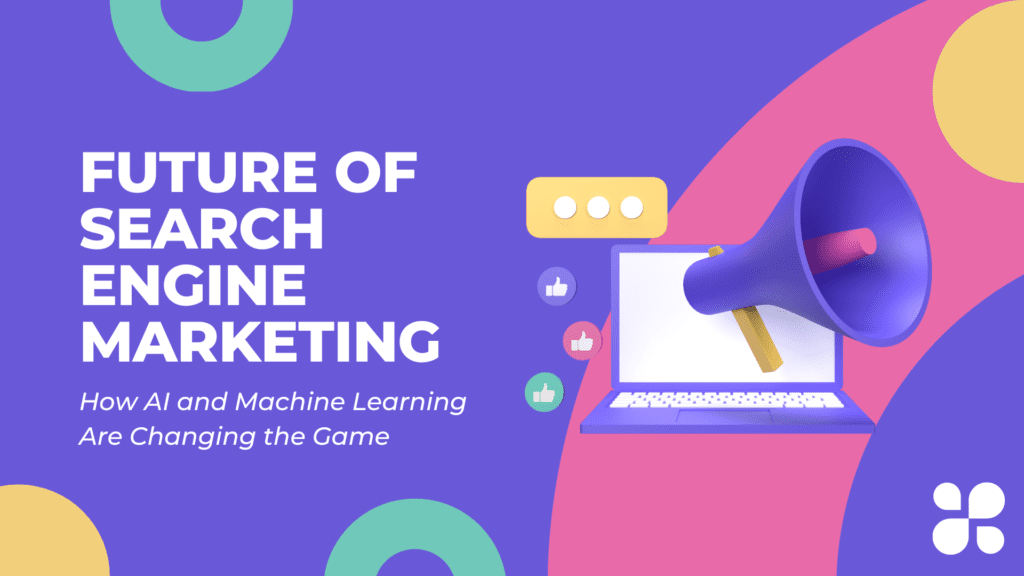SEO Friendly Content is an integral part of Search Engine Optimization (SEO) and plays a vital role in driving traffic to a website. Content refers to any information presented on a website, including text, images, videos, and audio. Search engines use algorithms that crawl through websites and analyze their content to determine the relevance and usefulness of the information presented.
The quality and relevance of content are important factors that search engines use to determine a website’s ranking in the search results. Websites with high-quality, relevant, and useful content are more likely to rank higher in search results than websites with low-quality or irrelevant content.
Content that is optimized for SEO includes keywords, phrases, and other relevant information that search engines use to match a user’s search query with the most relevant website. However, it’s important to note that content should be written for users, not just search engines. High-quality content that engages and informs users are more likely to be shared and linked to, which can further boost a website’s ranking in search results.
Creating and maintaining high-quality content is an ongoing process that requires time, effort, and resources. However, the benefits of investing in content creation and optimization for SEO can lead to increased traffic, higher rankings, and ultimately, more leads and sales.
The purpose of this article is to explain the importance of content in SEO and how it can impact a website’s ranking in search results. By understanding the role of content in SEO, website owners, and digital marketers can make informed decisions about how to optimize their content for search engines while also providing value to their users.
Additionally, this article aims to provide you with insights and best practices for creating high-quality content that can help your websites rank higher in search results and ultimately drive more traffic and conversions.
Understanding Your Target Audience

Defining the target audience
Defining the target audience is the foundation of any successful marketing strategy. The target audience refers to the group of people that a business or organization is trying to reach with its products or services. Understanding the characteristics of the target audience can help businesses tailor their marketing messages and communication strategies to better resonate with this group.
The target audience can be defined by factors such as age, gender, geographic location, interests, and buying habits. Conducting market research and analyzing customer data can help businesses identify the specific demographics and psychographics of their target audience.
Identifying the audience’s needs and preferences
Once the target audience has been defined, it’s important to identify their needs and preferences. Understanding what motivates the audience to make a purchase, what their pain points are, and what they value can help businesses create products and services that better meet the audience’s needs.
Market research, customer surveys, and analyzing customer data can help businesses identify the needs and preferences of their target audience. This information can then be used to create targeted marketing messages and communication strategies that resonate with the audience and drive engagement.
Understanding the audience’s search intent
In the context of Search Engine Optimization (SEO), understanding the audience’s search intent is critical to creating content that is relevant and useful. Search intent refers to the underlying motivation behind a user’s search query.
For example, a user searching for “best running shoes” may be looking for product recommendations or reviews, while a user searching for “how to tie running shoes” may be looking for instructional content. By understanding the search intent of their target audience, businesses can create content that addresses the user’s specific needs and provides value.
Keyword research and analysis can help businesses identify the search queries that are most relevant to their target audience. By incorporating these keywords into their content, businesses can improve their search engine rankings and drive more traffic to their website.
Defining the target audience, identifying their needs and preferences, and understanding their search intent are crucial elements of a successful marketing and SEO strategy. By taking the time to understand the audience, businesses can create targeted and relevant content that resonates with their audience and drives engagement.
Conducting Keyword Research

Definition of keyword research
Keyword research is the process of identifying and analyzing the words and phrases that people use to search for information on search engines like Google. The goal of keyword research is to identify the keywords and phrases that are most relevant to a business or website’s content and target audience.
Keyword research involves analyzing search volume, competition, and relevance to determine which keywords and phrases are most valuable to target in search engine optimization (SEO) and paid search campaigns.
Importance of Keyword Research
Keyword research is an important part of any SEO or digital marketing strategy. By identifying the keywords and phrases that people use to search for information related to a business or website’s content, businesses can optimize their content and website to rank higher in search engine results pages (SERPs).
Ranking higher in SERPs can increase visibility, traffic, and ultimately, conversions for a business or website. Keyword research can also help businesses identify new opportunities to target untapped or underserved markets.
Keyword research tools and techniques
Keyword research tools and techniques vary, but some common approaches include using keyword research tools like Google Keyword Planner, Moz Keyword Explorer, and SEMrush Keyword Magic Tool. These tools provide information on search volume, competition, and related keywords, which can help businesses identify valuable keywords to target in their content and SEO strategy.
Other techniques include analyzing competitor websites and content to identify which keywords they are targeting, analyzing website analytics data to identify which keywords are driving traffic and conversions, and using social media monitoring tools to identify trending topics and keywords.
Identifying long-tail keywords
Long-tail keywords are specific, niche keywords that are longer and more targeted than broader keywords. Long-tail keywords often have less competition and lower search volume, but they can be valuable for targeting specific audiences and driving conversions.
To identify long-tail keywords, businesses can use keyword research tools to identify related, niche keywords that have lower competition and more targeted search intent. Businesses can also analyze website analytics data to identify which long-tail keywords are driving traffic and conversions.
Keyword research is a critical part of any SEO or digital marketing strategy. By identifying valuable keywords and phrases to target in content and optimization efforts, businesses can improve their search engine rankings, increase visibility, and drive traffic and conversions. Techniques for conducting keyword research include using keyword research tools, analyzing competitor websites and content, analyzing website analytics data, and identifying long-tail keywords.
Creating Quality Content

Importance of high-quality content in SEO
High-quality content is essential to a successful search engine optimization (SEO) strategy. Search engines like Google prioritize content that is relevant, valuable, and engaging to users. This means that businesses and websites that consistently produce high-quality content are more likely to rank higher in search engine results pages (SERPs), driving more traffic and conversions.
Additionally, high-quality content can increase the credibility and authority of a website, leading to more backlinks and social shares. This further boosts SEO and can help establish a business or website as a thought leader in the industry.
Tips for creating high-quality content
Writing engaging headlines
Headlines are the first impression that a reader has of a piece of content, so they need to be attention-grabbing and relevant. Use active language, power words, and numbers to create a sense of urgency or excitement. Make sure that the headline accurately reflects the content of the article and provides value to the reader.
Providing value to the reader
High-quality content should provide value to the reader by answering their questions, solving their problems, or providing new insights or perspectives. This requires in-depth research, expertise, and a thorough understanding of the target audience. Use examples, case studies, and real-world applications to demonstrate the value of the content.
Ensuring readability
Readability is a key factor in keeping readers engaged with the content. Use short paragraphs, subheadings, bullet points, and bold or italicized text to break up large blocks of text and make the content more scannable. Use simple language and avoid jargon or technical terms that may be unfamiliar to readers.
Utilizing visual content
Visual content like images, videos, infographics, and charts can help break up the text and make the content more engaging and memorable. Use high-quality visuals that are relevant to the content and provide additional value to the reader.
Avoiding common content creation mistakes
Keyword stuffing
Keyword stuffing is the practice of overusing keywords in the content to try to manipulate search engine rankings. This can result in penalties from search engines and can make the content appear spammy or low-quality. Instead, use keywords naturally and strategically throughout the content.
Duplicate content
Duplicate content is content that appears on multiple pages of a website or across different websites. This can confuse search engines and result in lower rankings or penalties. To avoid duplicate content, create unique and original content for each page and avoid copying content from other sources.
Thin content
Thin content is content that lacks depth, value, or relevance to the reader. This can include short articles, content that is overly promotional, or content that is not backed up by research or expertise. To avoid thin content, focus on creating in-depth and valuable content that provides a unique perspective or solves a specific problem for the reader.
High-quality content is essential to a successful SEO strategy. To create high-quality content, businesses, and websites should focus on writing engaging headlines, providing value to the reader, ensuring readability, and utilizing visual content.
Additionally, it is important to avoid common content creation mistakes like keyword stuffing, duplicate content, and thin content. By creating high-quality content, businesses can improve their search engine rankings, increase credibility and authority, and drive more traffic and conversions.
Optimizing Your Content for SEO
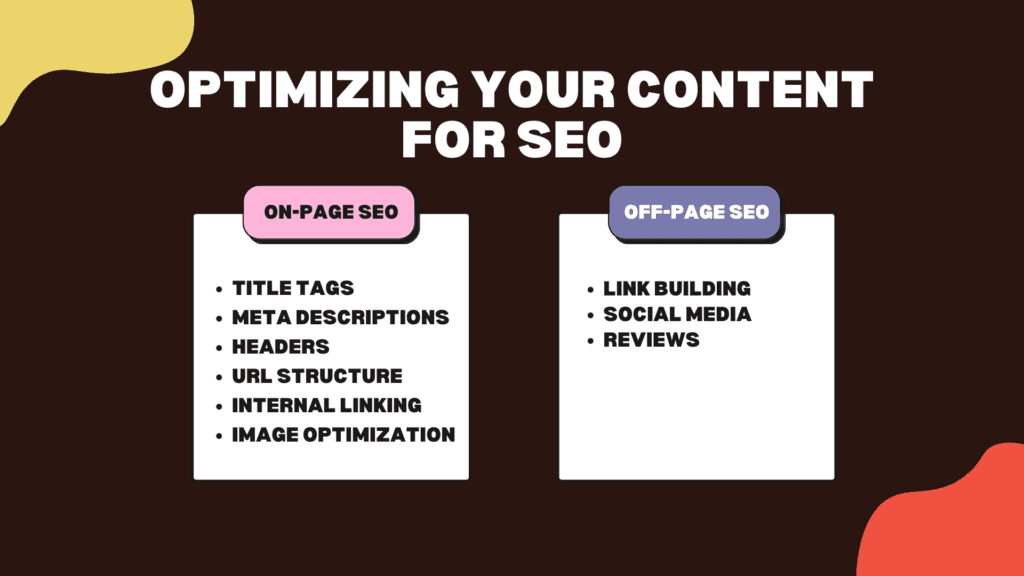
On-Page SEO
On-page SEO refers to the optimization of individual web pages to improve their search engine rankings and drive more organic traffic. Here are some important on-page SEO elements:
Title tags
Title tags are HTML tags that provide a brief and concise description of the content on a webpage. They appear in the search engine results pages (SERPs) as the clickable headline for a webpage. Title tags should accurately describe the content of the page and include relevant keywords to improve search engine visibility.
Meta descriptions
Meta descriptions are HTML tags that provide a summary of the content on a webpage. They appear below the title tag in the SERPs and can influence a user’s decision to click on a webpage. Meta descriptions should accurately describe the content of the page, include relevant keywords, and provide a compelling reason for users to click on the page.
Headers
Headers are HTML tags that are used to structure the content on a webpage. They help break up the content into smaller sections, making it easier for users to read and understand. Headers should be used in a hierarchical order, with H1 being the most important and H6 being the least important.
URL structure
The URL structure of a webpage should be descriptive and easy to read for both users and search engines. Use relevant keywords in the URL and separate words with hyphens to improve readability.
Internal linking
Internal linking refers to linking to other pages within the same website. This helps to improve navigation, spread link authority, and improve the user experience. Use descriptive anchor text and links to relevant pages to improve search engine visibility.
Image optimization
Images should be optimized for search engines by using descriptive file names, alt tags, and captions. This helps to improve search engine visibility and also improves accessibility for users with disabilities.
Off-Page SEO
Off-page SEO refers to the optimization of external factors that can influence a website’s search engine rankings. Here are two important off-page SEO elements:
Link building
Link building refers to the process of acquiring backlinks from other websites to improve search engine rankings. Backlinks are a key factor in determining a website’s authority and credibility. Focus on acquiring high-quality, relevant backlinks from authoritative websites in your industry.
Social media marketing
Social media marketing can help to improve a website’s visibility and drive more traffic. By sharing content on social media platforms, businesses can increase their reach and engagement with their target audience. This can also lead to more backlinks and social shares, which can improve search engine rankings.
Both on-page and off-page SEO are important factors in improving a website’s search engine rankings and driving more organic traffic. On-page SEO elements like title tags, meta descriptions, headers, URL structure, internal linking, and image optimization should be optimized to improve search engine visibility and user experience.
Off-page SEO elements like link building and social media marketing can help to improve a website’s authority, credibility, and visibility. By optimizing both on-page and off-page SEO, businesses can improve their search engine rankings and drive more traffic and conversions.
Measuring and Analyzing Your Content’s Performance
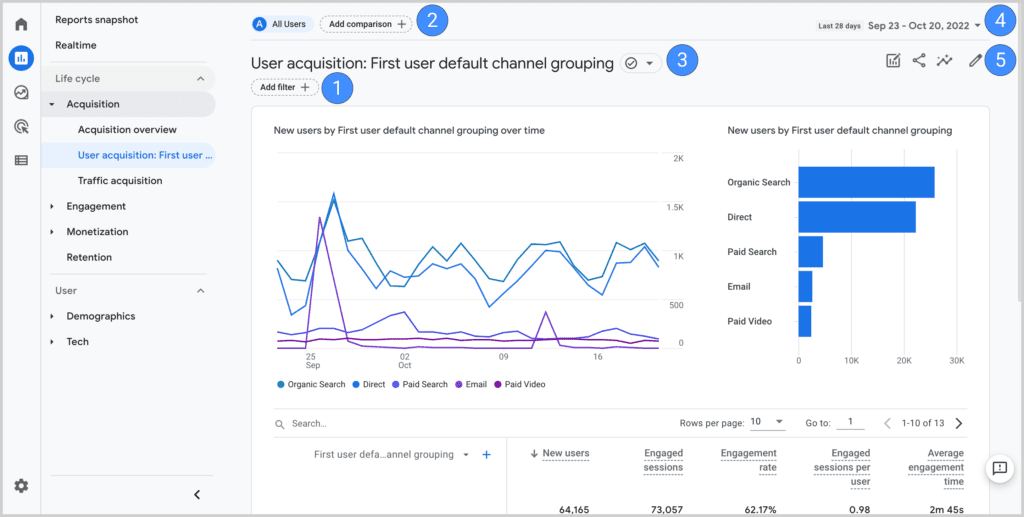
Importance of tracking and analyzing performance
Tracking and analyzing website performance is an essential part of any successful digital marketing strategy. It allows businesses to gain insights into how users interact with their websites and to identify areas for improvement. By analyzing website performance data, businesses can make informed decisions about future marketing campaigns, content creation, and website design changes.
Metrics to track
Here are three important metrics to track when analyzing website performance:
Traffic
Traffic refers to the number of visitors to a website. By tracking traffic, businesses can gain insights into how many people are visiting their website, where they are coming from, and how they are finding the website. This information can be used to optimize marketing campaigns and improve website design.
Engagement
Engagement refers to how users interact with a website. By tracking engagement metrics like bounce rate, time on site, and pages per session, businesses can gain insights into how users are engaging with their website content. This information can be used to identify areas for improvement, such as creating more engaging content or improving website navigation.
Conversions
Conversions refer to specific actions that users take on a website, such as making a purchase or filling out a contact form. By tracking conversion metrics, businesses can gain insights into how effective their marketing campaigns are at driving conversions. This information can be used to optimize marketing campaigns and improve website design to increase conversion rates.
Tools for measuring and analyzing performance
Here are some tools that businesses can use to measure and analyze website performance:
Google Analytics
Google Analytics is a free tool that provides businesses with detailed insights into website performance. It allows businesses to track traffic, engagement, and conversion metrics and to gain insights into user behavior and website performance trends.
Heatmap tools
Heatmap tools like Crazy Egg and Hotjar allow businesses to visualize how users are interacting with their websites. By tracking user clicks and scrolling behavior, businesses can gain insights into how users are engaging with their website content and identify areas for improvement.
A/B testing tools
A/B testing tools like Optimizely and VWO allow businesses to test different versions of their website to determine which version performs better. By testing different design elements, copy, and calls to action, businesses can optimize their website design to improve engagement and conversion rates.
Tracking and analyzing website performance is an important part of any successful digital marketing strategy. By tracking metrics like traffic, engagement, and conversions, businesses can gain insights into user behavior and website performance trends.
Tools like Google Analytics, heatmap tools, and A/B testing tools can be used to measure and analyze website performance and to identify areas for improvement. By continuously tracking and analyzing website performance, businesses can optimize their marketing campaigns and website design to drive more traffic and conversions.
Conclusion
Recap of the importance of content in SEO
Content is one of the most important factors in search engine optimization (SEO). High-quality content helps to increase website traffic, improve user engagement, and boost search engine rankings. By creating valuable content that answers user queries and provides useful information, businesses can attract more visitors to their websites and improve their online visibility.
To create effective content for SEO, businesses must focus on producing high-quality, engaging, and informative content that resonates with their target audience. This involves conducting keyword research to identify relevant search terms and topics, creating well-written and compelling content, and optimizing content for search engines by including relevant keywords, meta descriptions, and other on-page elements.
Final thoughts and takeaways
In conclusion, content plays a critical role in SEO, and businesses must focus on creating high-quality content that provides value to their audience. By producing content that answers user queries and provides useful information, businesses can improve their website traffic, engagement, and search engine rankings.
To ensure the success of their content marketing efforts, businesses must also avoid common content creation mistakes like keyword stuffing, duplicate content, and thin content. Instead, they should focus on creating content that is optimized for search engines and provides real value to their audience.
By continually tracking and analyzing website performance and making necessary improvements, businesses can stay ahead of the competition and attract more visitors to their websites. Ultimately, creating high-quality content that resonates with their audience is the key to achieving long-term success in SEO.
Read More: How To Create A Winning Content Marketing Strategy For Your Business
FAQs Related To SEO Friendly Content
What role does content play in SEO?
Content is a critical factor in SEO, as it helps to improve website traffic, user engagement, and search engine rankings.
What are some tips for creating high-quality content for SEO?
To create high-quality content for SEO, businesses should focus on writing engaging headlines, providing value to their audience, ensuring readability, and using visual content.
What are some common mistakes to avoid when creating content for SEO?
Common mistakes to avoid include keyword stuffing, duplicate content, and thin content, as these can hurt search engine rankings and user engagement.
What are some key on-page SEO elements to focus on?
Key on-page SEO elements to focus on include title tags, meta descriptions, headers, URL structure, internal linking, and image optimization.
What is off-page SEO and why is it important?
Off-page SEO refers to activities that are performed outside of a website to improve its search engine rankings. This includes link building and social media marketing, which can help to increase website authority and attract more visitors.
What metrics should I track to measure the success of my SEO efforts?
Key metrics to track include website traffic, user engagement, and conversions, as these can help to identify areas for improvement and measure the effectiveness of SEO strategies.
What tools can I use to measure and analyze website performance?
There are several tools available for measuring and analyzing website performance, including Google Analytics, SEMrush, and Ahrefs, which can provide insights into website traffic, user behavior, and search engine rankings.
How can I improve my website’s search engine rankings?
To improve search engine rankings, businesses should focus on creating high-quality content, optimizing on-page elements, building backlinks, and engaging in social media marketing.
What are long-tail keywords and why are they important for SEO?
Long-tail keywords are more specific search terms that can help businesses target a more niche audience and improve search engine rankings for specific topics. They are important for SEO because they can help businesses attract more qualified traffic to their website.
Why is it important to continually track and analyze website performance for SEO?
By continually tracking and analyzing website performance, businesses can identify areas for improvement, measure the effectiveness of SEO strategies, and stay ahead of the competition in search engine rankings.
Read More: 13 Tips to Help You Create SEO Friendly Content
References and Additional Resources
List of sources cited in the article
- Moz – https://moz.com/learn/seo/on-page-factors
- Yoast – https://yoast.com/on-page-seo/
- SEMrush – https://www.semrush.com/blog/why-content-is-important-for-seo/
- Backlinko – https://backlinko.com/on-page-seo
- Search Engine Journal – https://www.searchenginejournal.com/content-seo-tips/299975/
- Hubspot – https://blog.hubspot.com/marketing/on-page-seo-checklist
- Neil Patel – https://neilpatel.com/blog/off-page-seo/
- Search Engine Land – https://searchengineland.com/guide/what-is-seo
- Ahrefs – https://ahrefs.com/blog/how-to-rank-for-multiple-keywords-in-2021/
- Google Analytics – https://analytics.google.com/analytics/academy/
Additional resources for further learning and improvement
If you want to improve your knowledge and skills in SEO, here are some additional resources that you can check out:
- Google Search Central – This is the official Google resource for webmasters and SEO practitioners. It contains a wealth of information on various SEO topics and best practices. You can access it here: https://developers.google.com/search/docs/beginner/seo-starter-guide
- Moz Blog – Moz is a popular SEO tool provider that also has a comprehensive blog that covers various SEO topics. You can check it out here: https://moz.com/blog
- Ahrefs Blog – Ahrefs is another popular SEO tool that offers a comprehensive blog that covers various SEO topics. You can check it out here: https://ahrefs.com/blog/
- SEMrush Academy – SEMrush is a popular SEO tool that offers a variety of courses on SEO and digital marketing. You can check it out here: https://www.semrush.com/academy/
- Backlinko Blog – Backlinko is a popular SEO blog that offers actionable tips and insights on various SEO topics. You can check it out here: https://backlinko.com/blog
- Search Engine Journal – Search Engine Journal is another popular SEO blog that covers a wide range of topics related to SEO, PPC, and social media. You can check it out here: https://www.searchenginejournal.com/
- Hubspot Academy – Hubspot offers a variety of courses on SEO, content marketing, and other digital marketing topics. You can check it out here: https://academy.hubspot.com/courses/inbound-marketing
- Neil Patel Blog – Neil Patel is a popular digital marketer who offers a wealth of information on SEO and other digital marketing topics. You can check out his blog here: https://neilpatel.com/blog/
By exploring these additional resources, you can further improve your knowledge and skills in SEO, and ultimately improve your website’s search engine rankings and overall performance.
